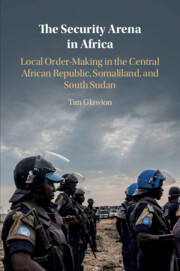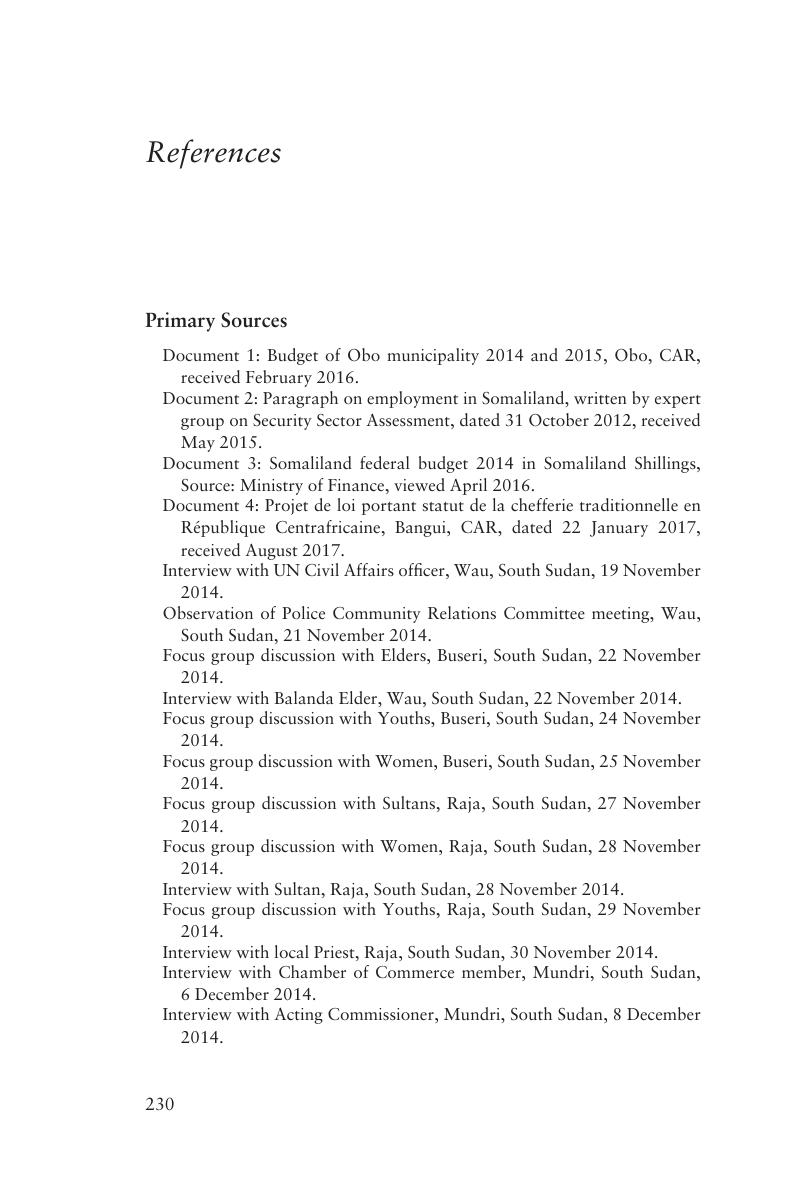 The Security Arena in Africa
The Security Arena in Africa Book contents
- The Security Arena in Africa
- The Security Arena in Africa
- Copyright page
- Contents
- Figures
- Maps
- Tables
- Boxes
- Acknowledgements
- Abbreviations
- Introduction
- 1 Ordering the Security Arena
- 2 National and Local Histories of Security
- 3 Creating Centres and Peripheries in the National Arena
- 4 Inner and Outer Circles of the Arena
- 5 Stable Ordering and Predictable Security
- 6 Fluid Ordering and Flexible Security
- 7 Mixing Ordering Forms
- 8 Embedding into and Detaching from the Arena
- Conclusion
- References
- Index
- References
References
Published online by Cambridge University Press: 16 January 2020
- The Security Arena in Africa
- The Security Arena in Africa
- Copyright page
- Contents
- Figures
- Maps
- Tables
- Boxes
- Acknowledgements
- Abbreviations
- Introduction
- 1 Ordering the Security Arena
- 2 National and Local Histories of Security
- 3 Creating Centres and Peripheries in the National Arena
- 4 Inner and Outer Circles of the Arena
- 5 Stable Ordering and Predictable Security
- 6 Fluid Ordering and Flexible Security
- 7 Mixing Ordering Forms
- 8 Embedding into and Detaching from the Arena
- Conclusion
- References
- Index
- References
Summary

- Type
- Chapter
- Information
- The Security Arena in AfricaLocal Order-Making in the Central African Republic, Somaliland, and South Sudan, pp. 230 - 254Publisher: Cambridge University PressPrint publication year: 2020


